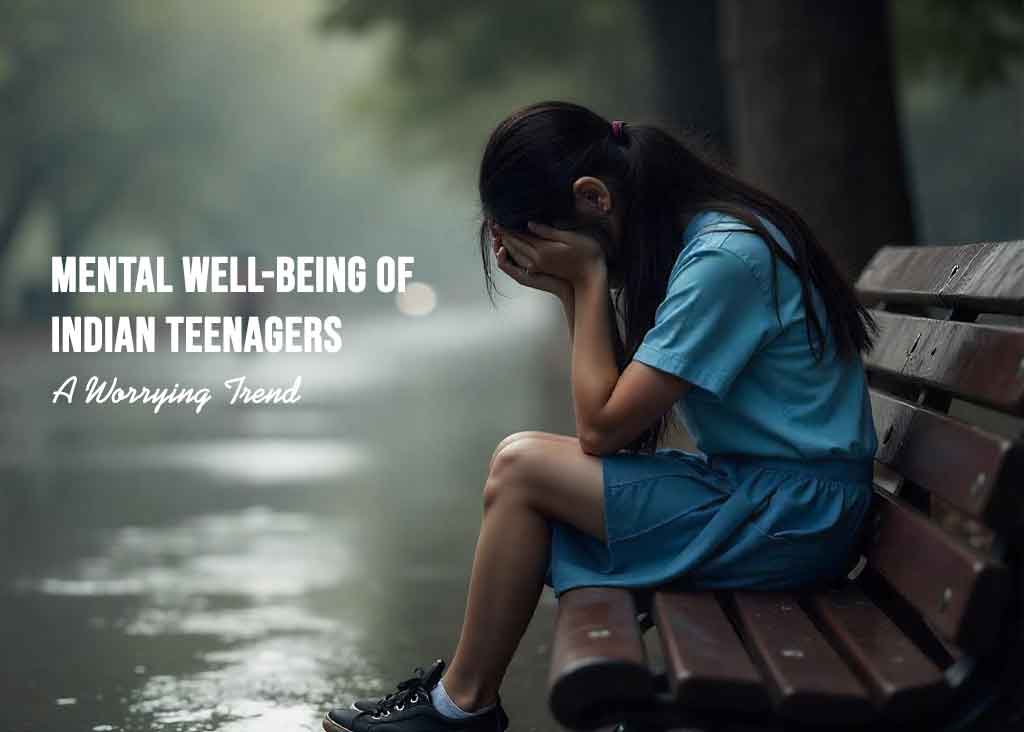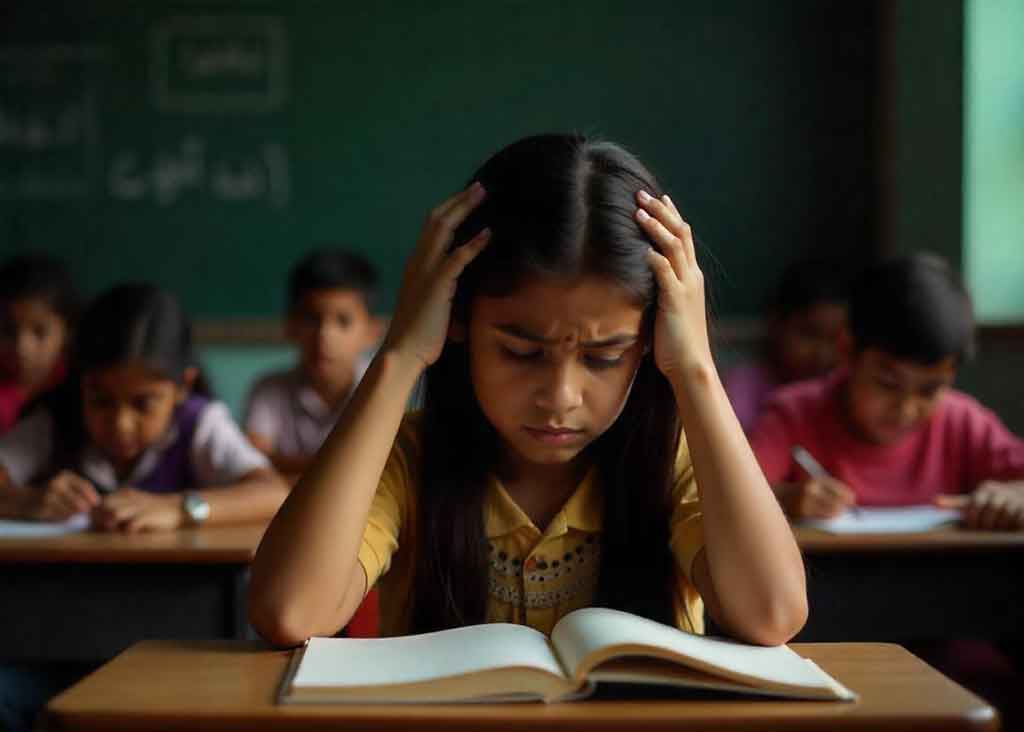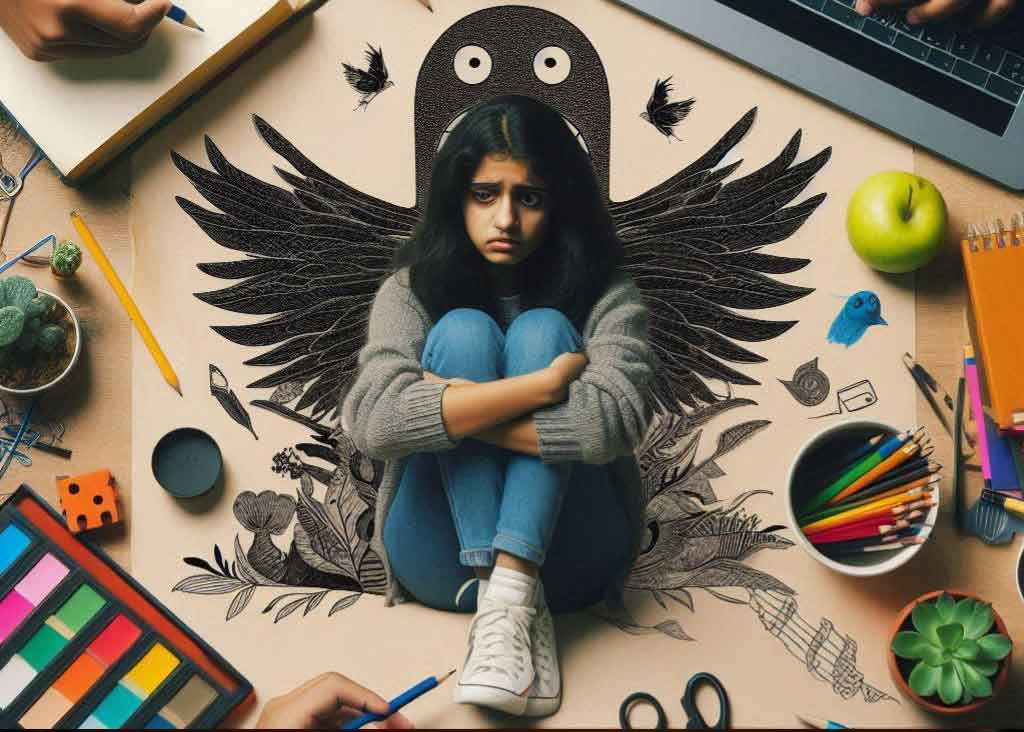Mental Well-being of Indian Teenagers: A Worrying Trend

In recent years, mental health has emerged as a critical issue for teenagers in India. With a population of over 1.4 billion, India is home to a significant number of adolescents navigating a unique set of challenges that impact their mental well-being. From academic pressure to social media overload, cultural expectations to limited access to mental health resources, Indian teenagers face a complex landscape that demands attention. This blog explores the key mental health issues affecting Indian teens and highlights the need for awareness, support, and systemic change.
Academic Pressure and Performance Anxiety
India’s education system is highly competitive, with millions of students vying for limited seats in prestigious institutions. Teenagers often face immense pressure from parents, teachers, and society to excel academically. Board exams, entrance tests like JEE and NEET, and the constant comparison with peers create a high-stress environment. According to a 2019 study by the National Institute of Mental Health and Neurosciences (NIMHANS), nearly 20% of Indian adolescents reported anxiety and stress-related disorders due to academic expectations.

The fear of failure, coupled with the stigma of not meeting societal benchmarks, can lead to burnout, depression, and, in extreme cases, suicidal thoughts. The tragic reality is that student suicides are not uncommon, with media reports frequently highlighting cases linked to exam stress or academic underperformance.
2. Social Media and Body Image Issues
The rise of social media platforms like Instagram, Snapchat, and TikTok has transformed how Indian teenagers interact and perceive themselves. While these platforms provide connectivity, they also expose young people to unattainable beauty standards, harassment, and the pressure to create a "perfect" online identity. A 2021 survey by the Indian Journal of Psychiatry found that excessive social media use was linked to increased feelings of inadequacy, low self-esteem, and anxiety among adolescents.
For girls, in particular, societal emphasis on fair skin, slim figures, and conventional beauty ideals—amplified by influencers and advertisements—can lead to body dysmorphia and eating disorders. Boys, too, face pressure to conform to hyper-masculine stereotypes, often struggling silently with self-image issues.
3. Cultural and Family Expectations
Indian culture places a strong emphasis on collectivism, where family expectations often take precedence over individual desires. Teenagers may feel obligated to pursue careers in "respectable" fields like engineering or medicine, even if their passions lie elsewhere. This conflict between personal aspirations and familial duty can create feelings of resentment, guilt, and identity crises.
Moreover, discussing mental health remains taboo in many Indian households. Teens struggling with depression or anxiety may hesitate to open up due to fear of being dismissed as "weak" or "overdramatic." This lack of open communication exacerbates feelings of isolation and prevents early intervention.
4. Stigma and Lack of Mental Health Resources
Despite growing awareness, mental health stigma persists in India. Many teenagers are reluctant to seek help due to societal judgment or lack of understanding about mental health conditions. Schools, where teens spend much of their time, often lack trained counselors or mental health programs. A 2022 report by the World Health Organization noted that India has only 0.75 psychiatrists per 100,000 people, one of the lowest ratios globally. This scarcity of professionals, combined with the high cost of private therapy, makes mental health care inaccessible for many.
Rural areas, in particular, face a dire shortage of resources, leaving millions of teens without support. Even in urban centers, mental health services are often underfunded or not tailored to adolescent needs.
5. Impact of the Pandemic and Digital Overload
The COVID-19 pandemic significantly worsened mental health challenges for Indian teens. Prolonged school closures, social isolation, and uncertainty about the future led to a spike in anxiety and depression. A 2021 study by UNICEF India revealed that 14% of adolescents reported feeling depressed or having little interest in activities during the pandemic. The shift to online learning also increased screen time, contributing to digital fatigue and disrupted sleep patterns.
Post-pandemic, the reliance on digital devices has continued, with many teens struggling to balance virtual and real-world interactions. The constant bombardment of information and notifications can overwhelm young minds, making it harder to focus or relax.

6. Substance Abuse and Peer Pressure
Experimentation with alcohol, tobacco, or drugs is another concern among Indian teenagers, often driven by peer pressure or as a coping mechanism for stress. In urban areas, access to recreational substances is increasing, while in rural regions, local brews or prescription drug misuse pose risks. Substance abuse not only affects physical health but also exacerbates mental health issues, creating a vicious cycle.
Steps Toward Change
Addressing the mental health epidemic among Indian youths calls for a multifaceted approach:
- Destigmatizing Mental Health: Public campaigns, school workshops, and media representation can normalize conversations about mental health. Celebrities and influencers openly discussing their struggles can inspire teens to seek help.
- Strengthening School Support: Schools should integrate mental health education into curricula and employ trained counselors. Safe spaces for students to express their concerns can make a significant difference.
- Parental Awareness: Parents need guidance on recognizing signs of mental distress and fostering open communication with their teens. Workshops and community programs can bridge this gap.
- Accessible Mental Health Services: Government initiatives, like the National Mental Health Programme, must prioritize adolescent mental health and expand affordable services, especially in rural areas. Teletherapy and mental health apps can also bridge accessibility gaps.
- Regulating Social Media: Promoting digital literacy and encouraging healthy social media habits can help teens navigate online spaces more safely.
- Community Support: Peer support groups, NGOs, and helplines like India’s Vandrevala Foundation or AASRA provide critical lifelines for teens in crisis.
Conclusion
The mental health challenges faced by teenagers in India are complex, rooted in societal, cultural, and systemic factors. However, with increased awareness, accessible resources, and collective action, it’s possible to create a supportive environment where teens can thrive. Parents, educators, policymakers, and society at large must work together to prioritize adolescent mental health, ensuring that no teen feels alone in their struggles. By fostering resilience and empathy, we can empower India’s youth to face the future with confidence and hope..
If you or someone you know is struggling, reach out to a trusted adult, counselor, or helpline. Your mental health matters, and help is available. please reach out to us at hello@fitmi.fit
Note: This is for informational purposes only and should not replace professional medical advice. Always consult a healthcare professional before starting any new treatment or session.
Join our community today and take the first step towards a healthier, more balanced you.
Photo: @Freepik, @unsplash, @Microsoft Designer

